AI that turns your MuleSoft flows into modern automations — in minutes.

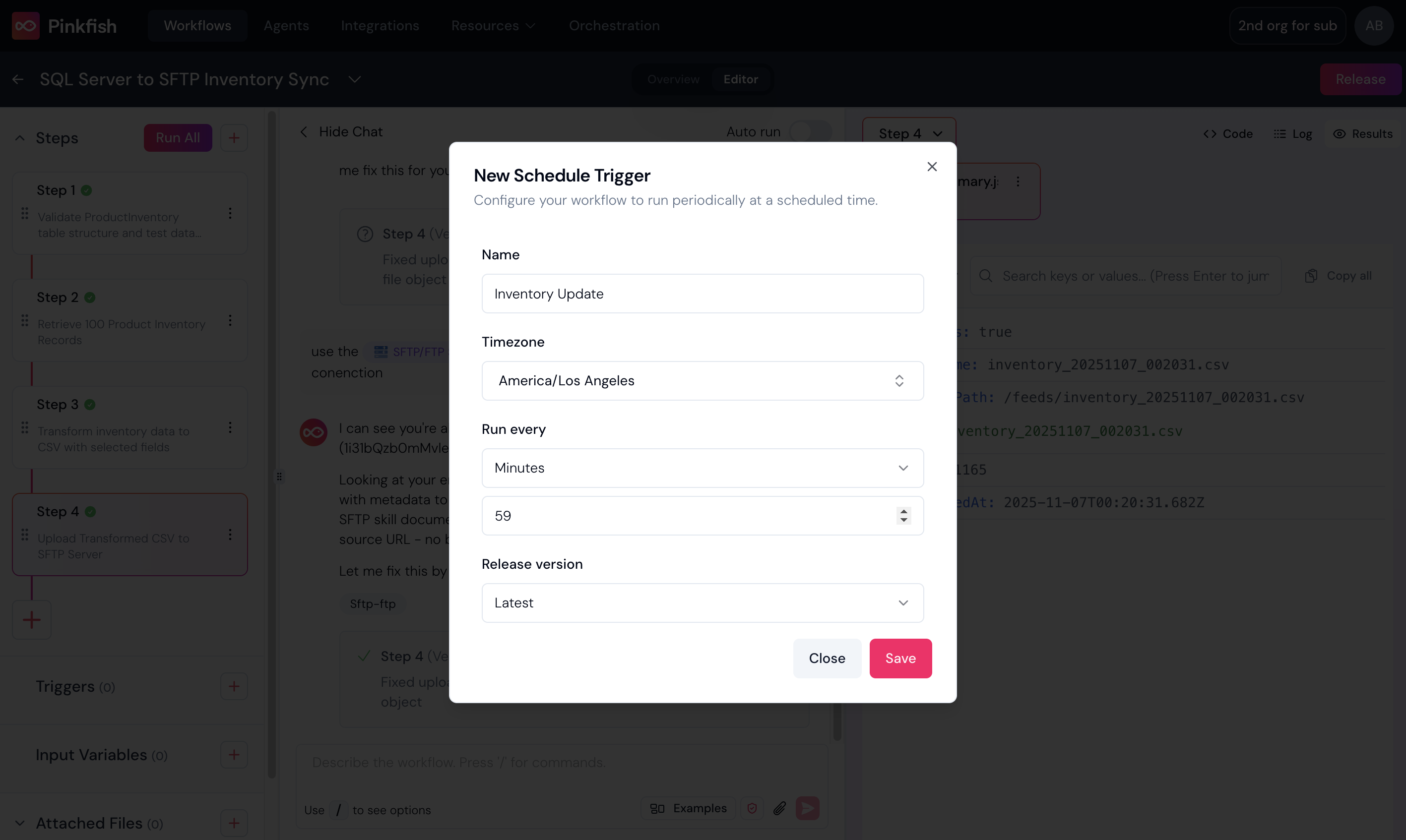
MuleSoft is expensive. Between licensing fees, CloudHub hosting costs, and the specialized developers you need to maintain it, you're paying a premium for technology that's slow to develop on and increasingly outdated. Moving to a modern platform makes sense, but the migration itself seems daunting. Weeks of manually translating XML flows, converting DataWeave transformations, and recreating integrations from scratch. Until now.
Pinkfish’s coding agent reads your MuleSoft XML and generates complete, modern automations in minutes. Paste your flow, answer a few questions about connections, and deploy cloud-native code that just works.
Copy any MuleSoft flow from Anypoint Studio and paste it directly into Pinkfish. The Pinkfish coding agent instantly begins analyzing the structure.
Here's an example of an export from MuleSoft. I’ll keep it simple so that you can follow the whole thing through. I understand that your flows are likely to be quite a bit more complex than this in practice.
This sample flow keeps a partner's inventory system in sync with yours. Every 90 minutes, it queries your MSSQL database for products with updated stock levels, transforms that data into a CSV file with SKU and quantity columns, and uploads it to your partner's SFTP server where their system picks it up and processes the changes.
Within seconds, Pinkfish identifies the key components of your flow:
The Pinkfish coding agent asks you to confirm the details and asks you to fill in any missing details. For example, if you’re missing an integration, Pinkfish agent will ask you for details about it before diving into work.
Once you've answered the clarifying questions, the Pinkfish coding agent generates your complete automation. No more XML. No more DataWeave. Just clean, readable code that does exactly what your MuleSoft flow did.
Pinkfish helps you test required integrations to make sure they work:
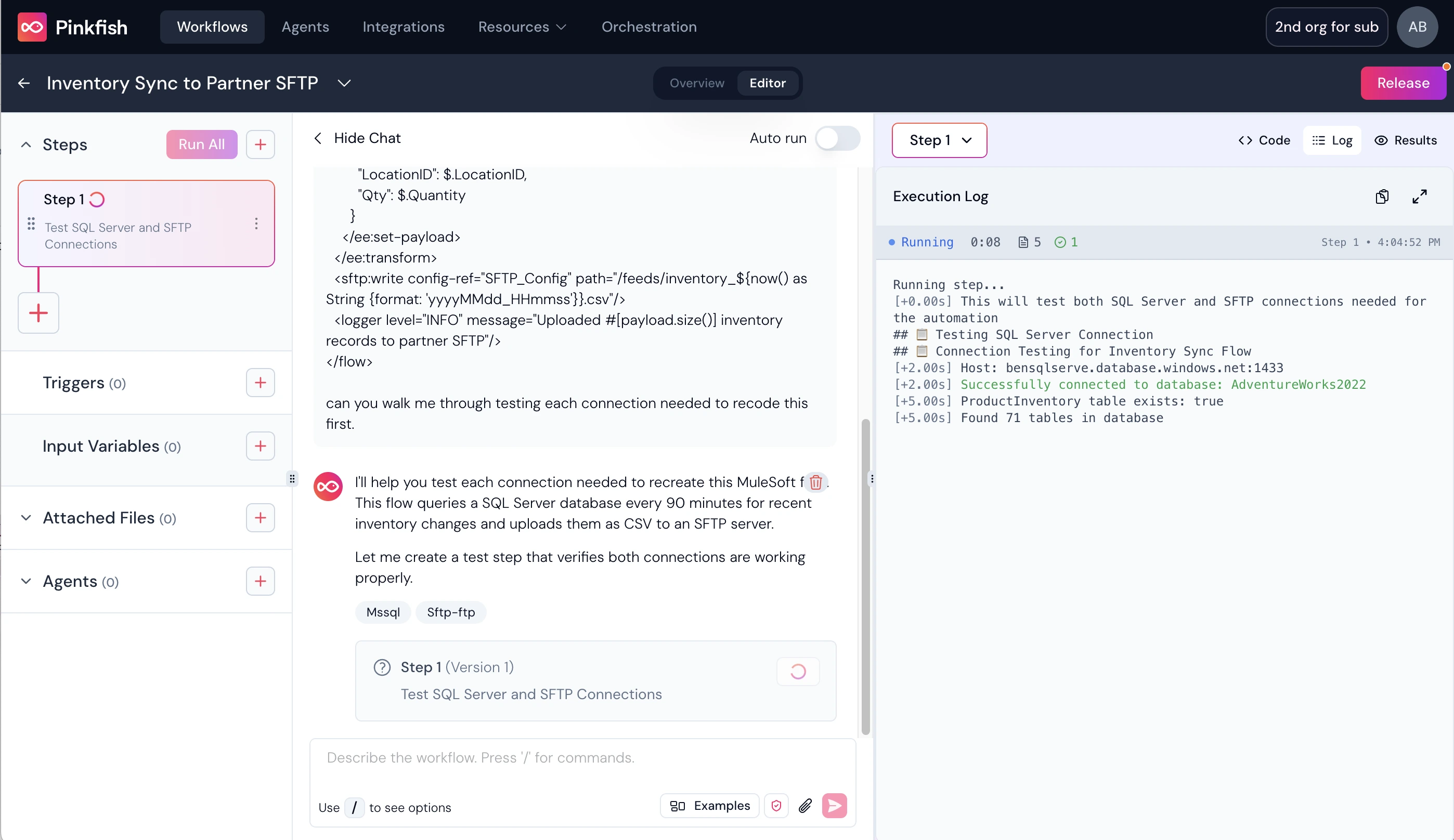
Then creates a 2nd step that retrieves your inventory data from MSSQL:
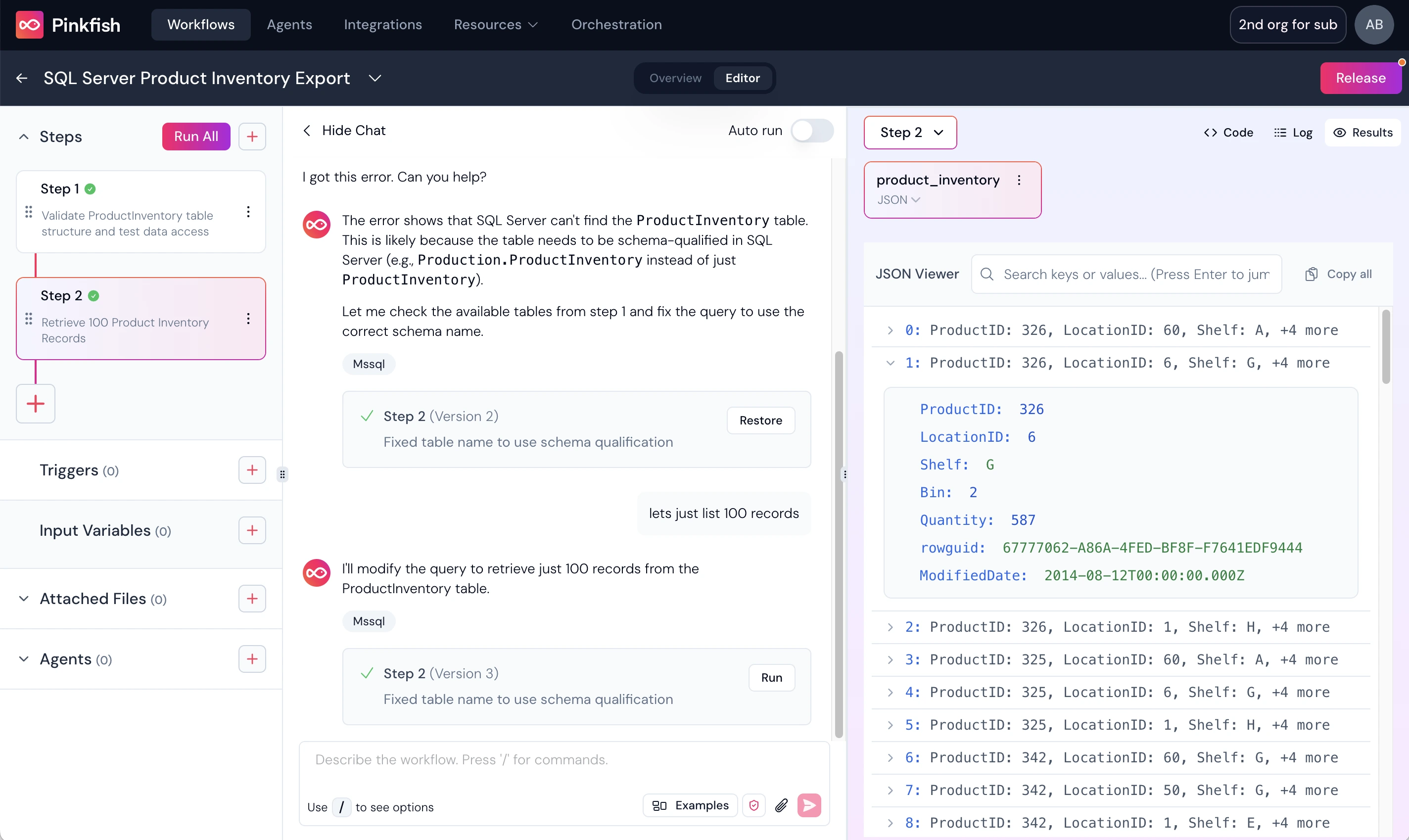
Then creates a 3rd step to convert your DataWeave logic
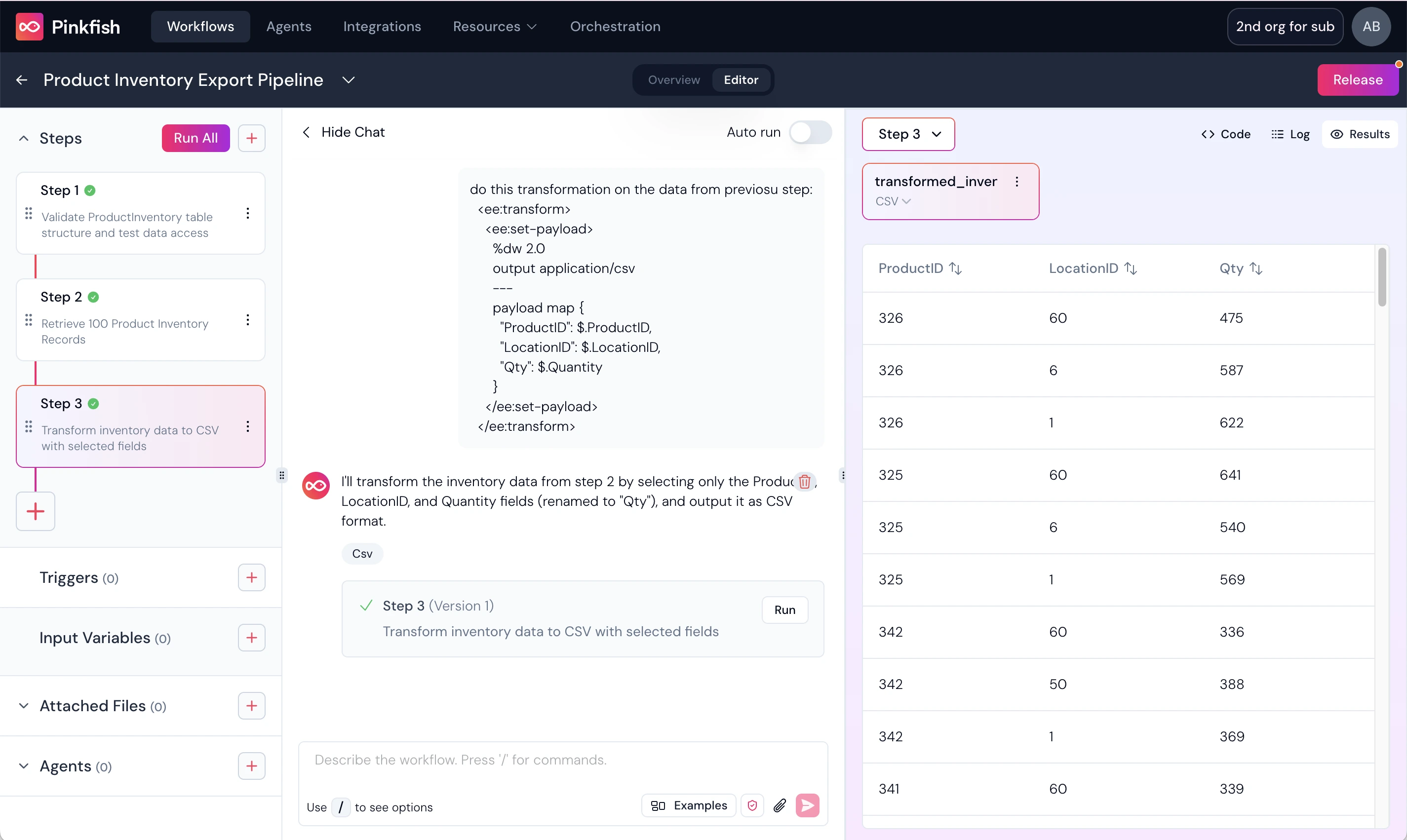
Then uploads the result of the transformation to partner’s SFTP
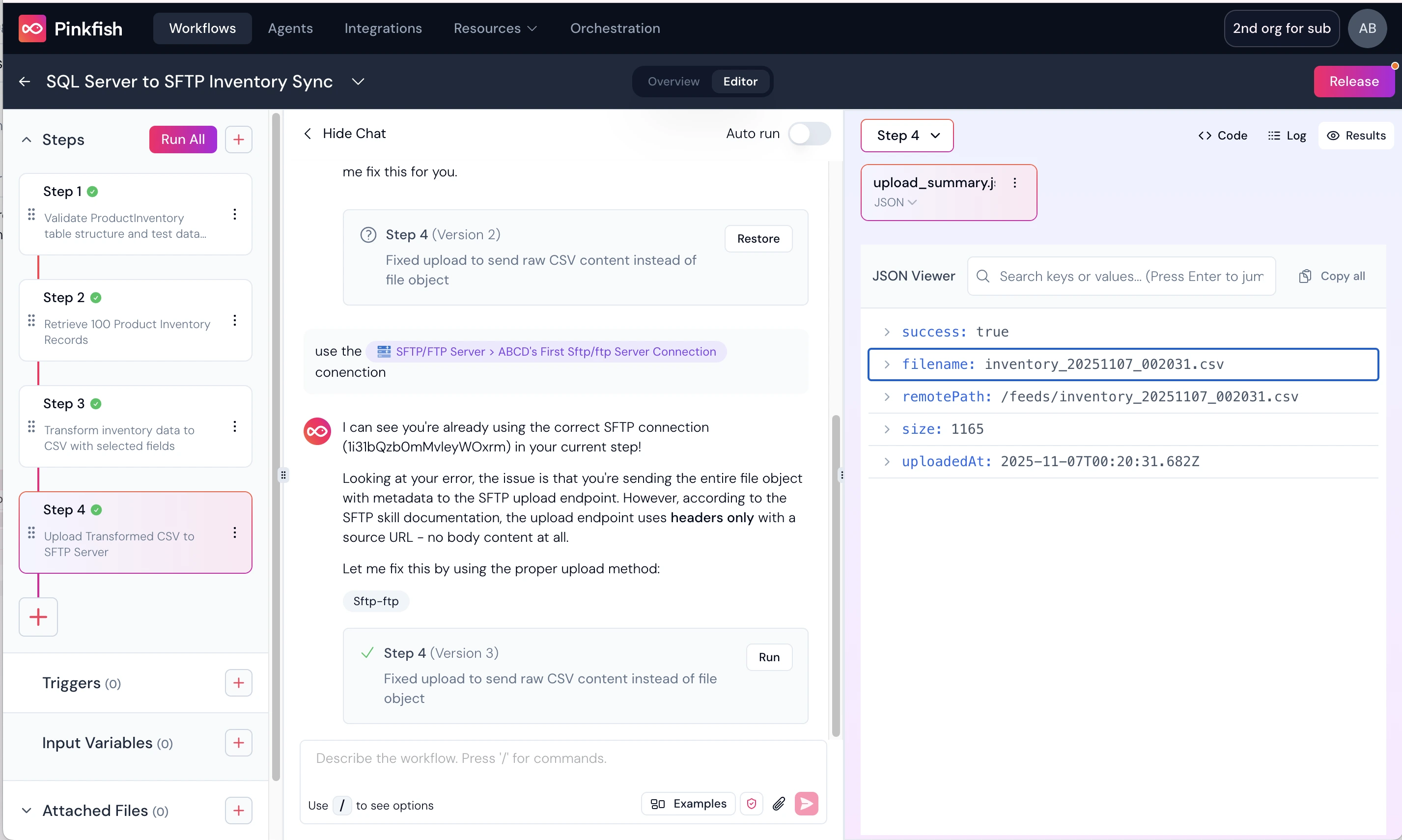
Finally, you manually set up a trigger to run every 90 minutes
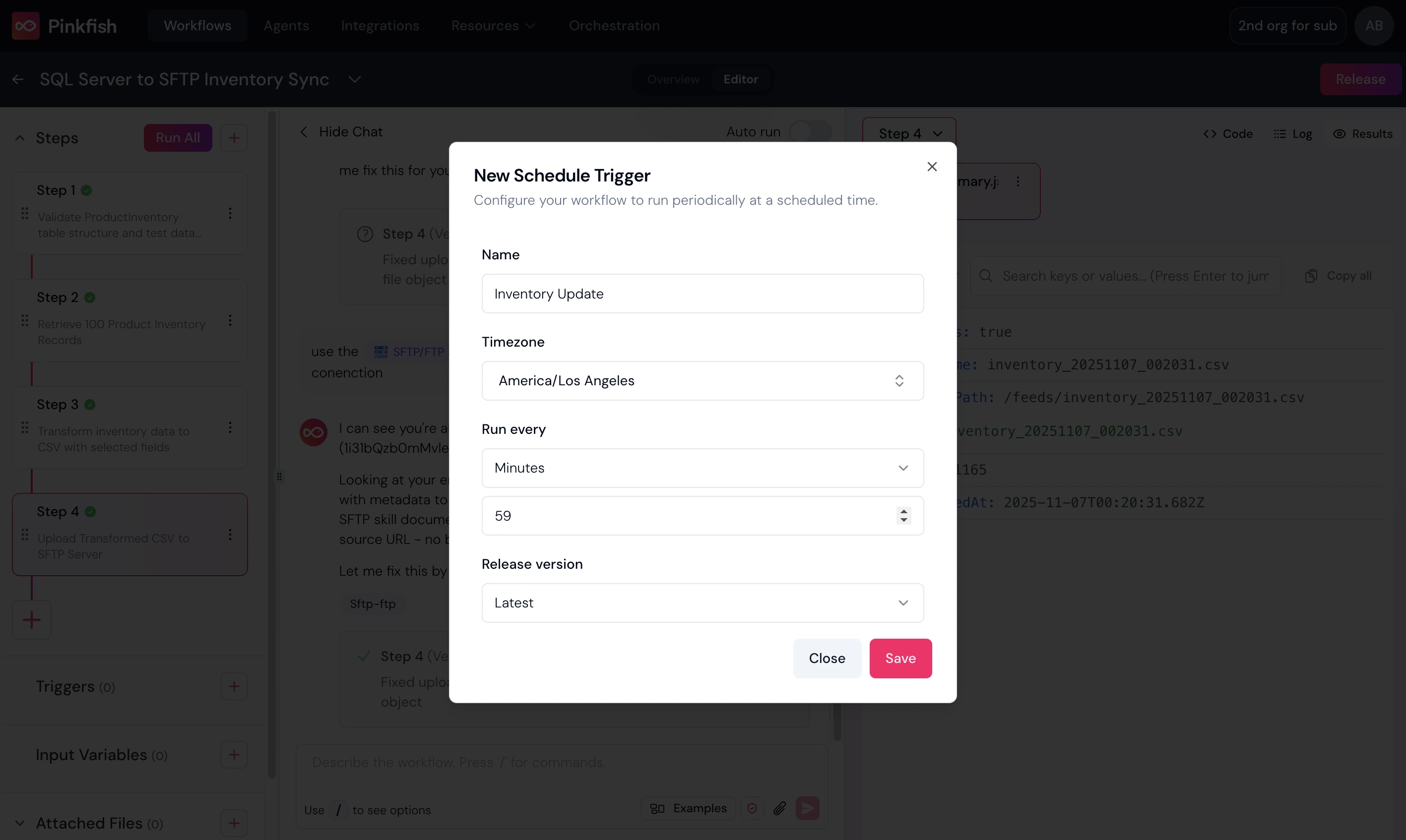
Here's how MuleSoft concepts map directly to Pinkfish:
.webp)
The Pinkfish coding agent doesn't just find-and-replace XML tags. It understands your workflows at a deeper level.
Intelligent Parsing: The agent recognizes MuleSoft's XML structure and namespaces, identifies flow patterns like schedulers and HTTP listeners, and extracts the actual business logic from DataWeave transformations.
Smart Component Mapping: Every MuleSoft element gets translated to its Pinkfish equivalent. Schedulers become scheduled triggers. Database selects become steps with SQL queries. DataWeave transforms become JavaScript code. HTTP requests become fetch API calls. The agent maps each component to modern, maintainable code.
Intelligent Code Generation: DataWeave gets converted to standard JavaScript. SQL queries are preserved exactly as written. The generated code follows best practices and includes proper error handling and logging. This isn't simple translation, it's idiomatic code generation.
Clarifying Questions: The agent only asks what it needs to know. It suggests existing connections when applicable, provides sensible defaults, and validates configurations before generating code. No guessing, just smart questions that get you to working code faster.
Ready to migrate your flows? Start with one simple workflow.
Migrating from MuleSoft doesn't need to be a multi-month project. The Pinkfish coding agent reads your XML flows, converts DataWeave to JavaScript, and generates working automations in minutes.
If it works, migrate more flows. If something doesn't translate cleanly, you'll find out in 15 minutes instead of after weeks of planning.
The biggest shift isn't the technology—it's that your team can read and modify the code without MuleSoft-specific training. The AI handles the migration and you’re off to the races.